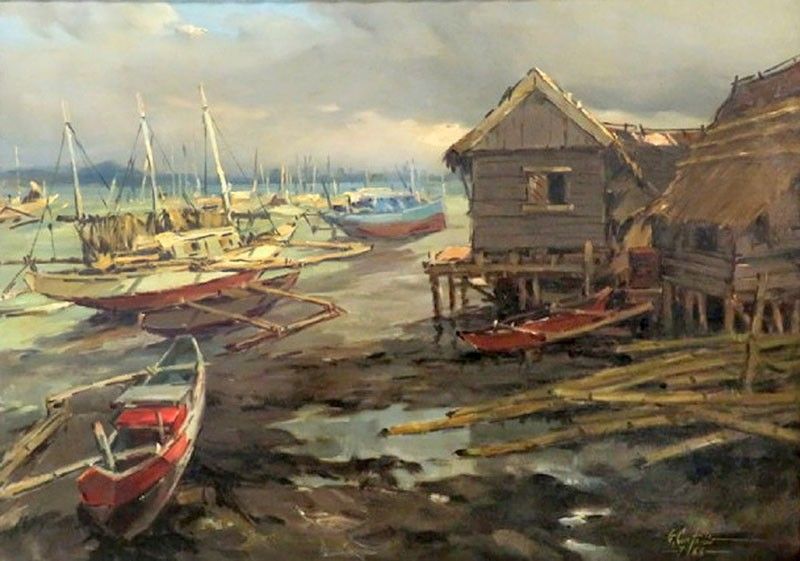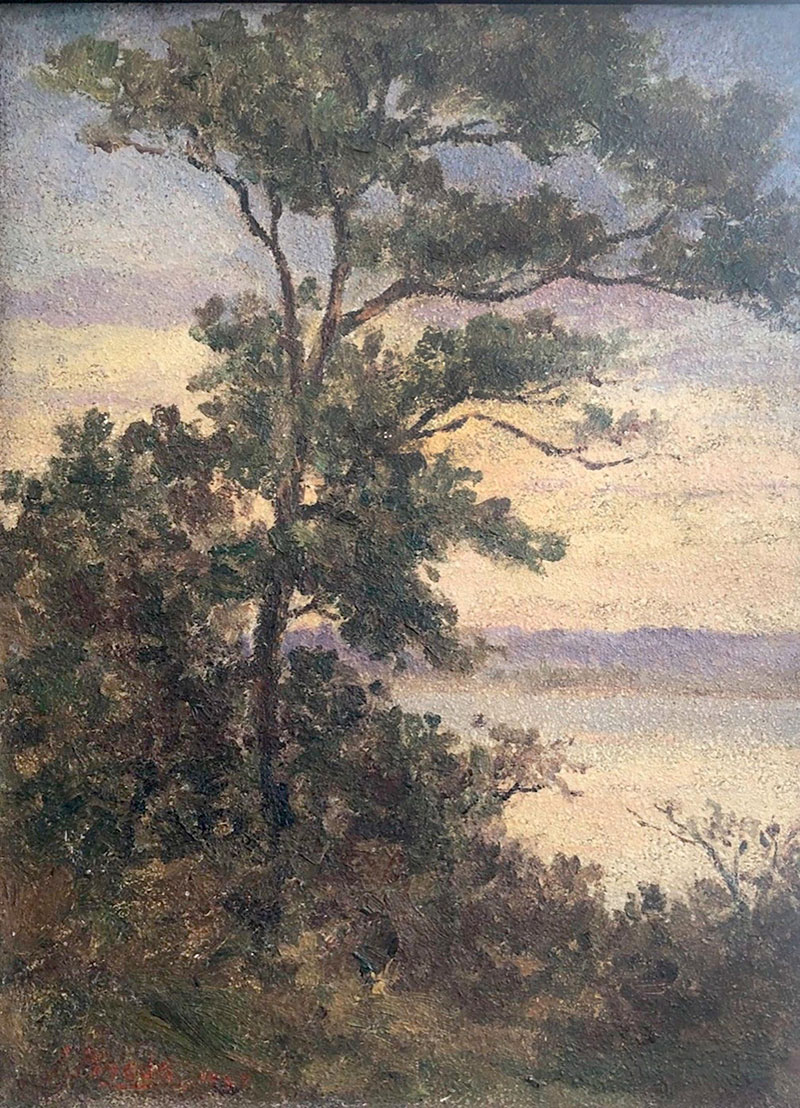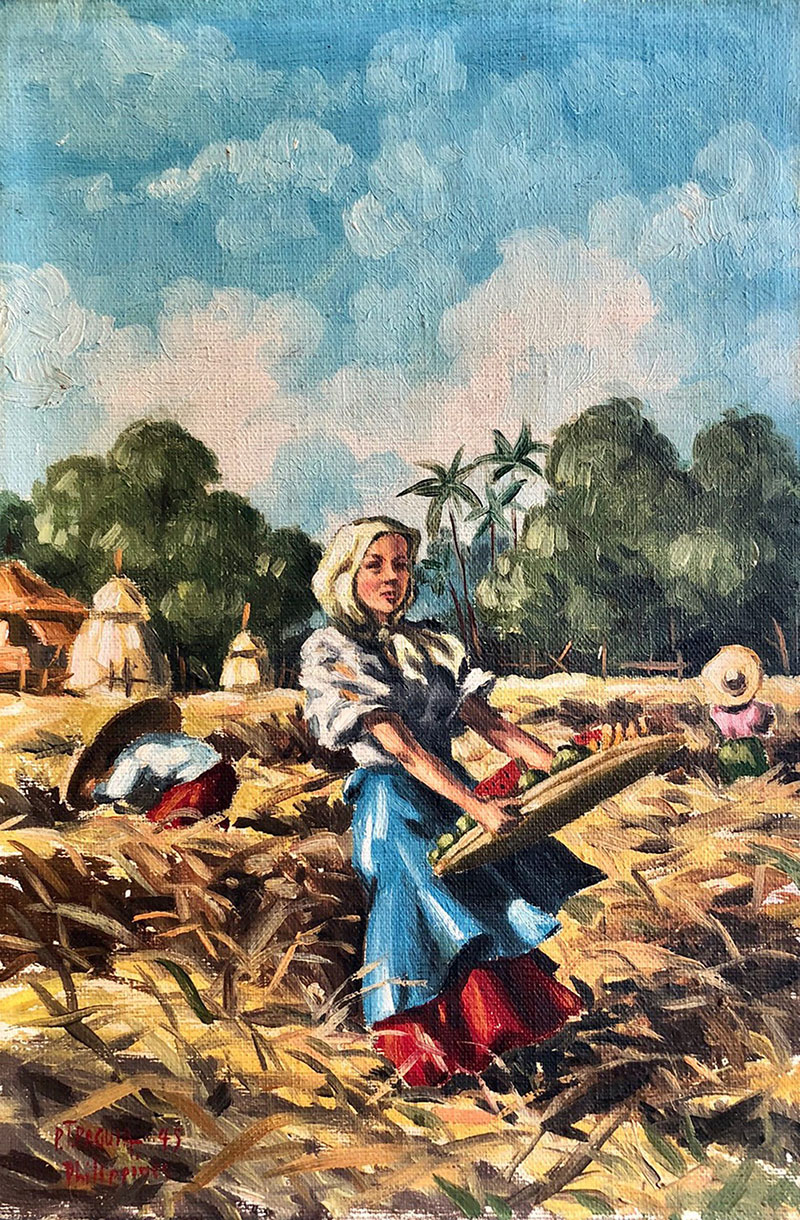Bringing the minor masters home

I’ve written a few pieces recently about my self-assigned mission of finding and bringing home, from various sources overseas, masterpieces of Philippine publishing and literature, from early texts in Spanish to travel books about the Philippines and first editions or first publications of notable literary works.
This week I’m going to extend that to another burgeoning interest of mine — the recovery and repatriation of Filipino art pieces abroad, particularly those of painters who may never have quite achieved the status of a Juan Luna or Fernando Amorsolo, but whose works have their own charms to recommend them.
I may be luckier than most art fanciers in that I happen to know someone who restores the masters, so I get to see more than my fair share of Manansalas, Ocampos, Botongs, Magsaysay-Hos, and Luzes, up close, warts and all. But unless I win the Nobel Prize, I’m never going to own one of these masterworks, so I’ve learned to moderate my ambitions and aim for something both significant and reasonably attainable within a professor’s means.
Those goals crystallized for me when I attended, some months ago, an exhibit titled “Fascination with Filipiniana: The Vargas Collection,” curated by my friend and fellow UP prof Dr. Patrick Flores, who walked me through the show and pointed out how interesting (and not quite so seamless) the transition was between tradition and modernism, sometime in the past midcentury. I could see the tensions between the two, occasionally manifesting in the same artist’s earlier and later work (I don’t recall that he was in this Met exhibit, but Constancio Bernardo, who left the Philippines as an ardent follower of his teacher Amorsolo and came home a committed modernist, much to Amorsolo’s dismay, provides a good example.)

“Tree at Sunset” by Jorge Pineda, 1937
Many of the paintings on exhibit belonged to the school of “Mabini art,” a term often and unfairly used in the pejorative sense, suggesting cheap art done in haste for the tourist market. Indeed there’s a lot of that (and the purposes may not have changed; they’ve just become more pretentious, pitched toward buyers with deeper pockets), but these pioneering Mabini artists were talented in their own right, persistently romantic in a time of gloomy realism.
I was particularly drawn to the work of Gabriel Custodio (1912-1993), another student of Amorsolo and Fabian de la Rosa. I had earlier acquired two small paintings of his from the late 1950s, restful vignettes depicting rice fields and bamboo groves. The Tanza, Cavite native had produced larger seascapes that I admired, but the art market had caught on to him and I couldn’t possibly afford him at auction — at least not here.
I’ve long been convinced that in the United States — languishing in bedrooms, barns, garages, and resale shops — must be scores of Filipino art works brought over by American servicemen and diplomats after World War II and the Vietnam War, surfacing only recently with the passing of these veterans and being disposed of at auction by their heirs.
A few months ago, a large painting by Custodio, about 2’ x 3’, turned up in, of all places, a Goodwill Store in Spokane, Washington — and I happily snagged that, and rolled it up in a tube for bringing home to Manila when I visited the US last month. Characteristically, Custodio signed it front and back, dated 1966; I’m calling it “Tanza Shore” in honor of his hometown and of its economic and cultural affinity to the water.
It was also on that trip when I secured and repatriated two other smaller but no less interesting pieces. One, shipped out of the East Coast, was an oil painting of a tree at sunset, more than anything an evocation of mood, an impressionist play of mauves, pinks, and oranges. It had been done by Jorge Pineda in 1937 and was still in its presumably original frame; the browned and crusty paper backing was beginning to crumble, but I plan to preserve it that way, as it bears the sticker of its framer: the Henry Schultheis Company, well known framers and gallery owners in New York City (Schultheis died in 1948). Pineda (1879-1946) himself was no mean painter, having won a prize for his work at the 1904 St. Louis World’s Fair and later becoming a teacher to Amorsolo.

“Tag-Ani” by P. T. Paguia, 1945
The third piece I brought home — sold by an antiques dealer in Connecticut — caught my eye not just because of its subject but also because of its symbolic use of color. It’s an oil-on-paperboard depiction of Filipino farmers harvesting rice — pretty typical enough, and unremarkable of itself. But this work had been done by one P. T. Paguia in 1945, at the end of the war and in a season of new hope — a patriotic optimism exuded by the red, blue, and white in the dress of the woman holding a bilao of fruits in the foreground, echoed by the other farmer and the brilliant sky. (Patrick Flores reminded me that Amorsolo had done a similar work in these colors, Palay Maiden, in 1920.) Sadly I could find nothing on P. T. Paguia, except a reference to Pedro T. Paguia being the illustrator of a 1952 book by Ramon Tapales, Singing and Growing for the Primary Grades.
Whether by established or obscure artists, these paintings from decades ago bring me joy and relief from the vexations of our time. Of course I could resell them, but frankly they probably won’t make too much, and just looking at them makes me happier than wondering what they may be worth, which I suppose is what amateur collecting should be about. Call them escapist, but they fortify my spirit by reminding me of the need to fight for beauty and plenitude for all.
* * *
Email me at jose@dalisay.ph and visit my blog at www.penmanila.ph.



















